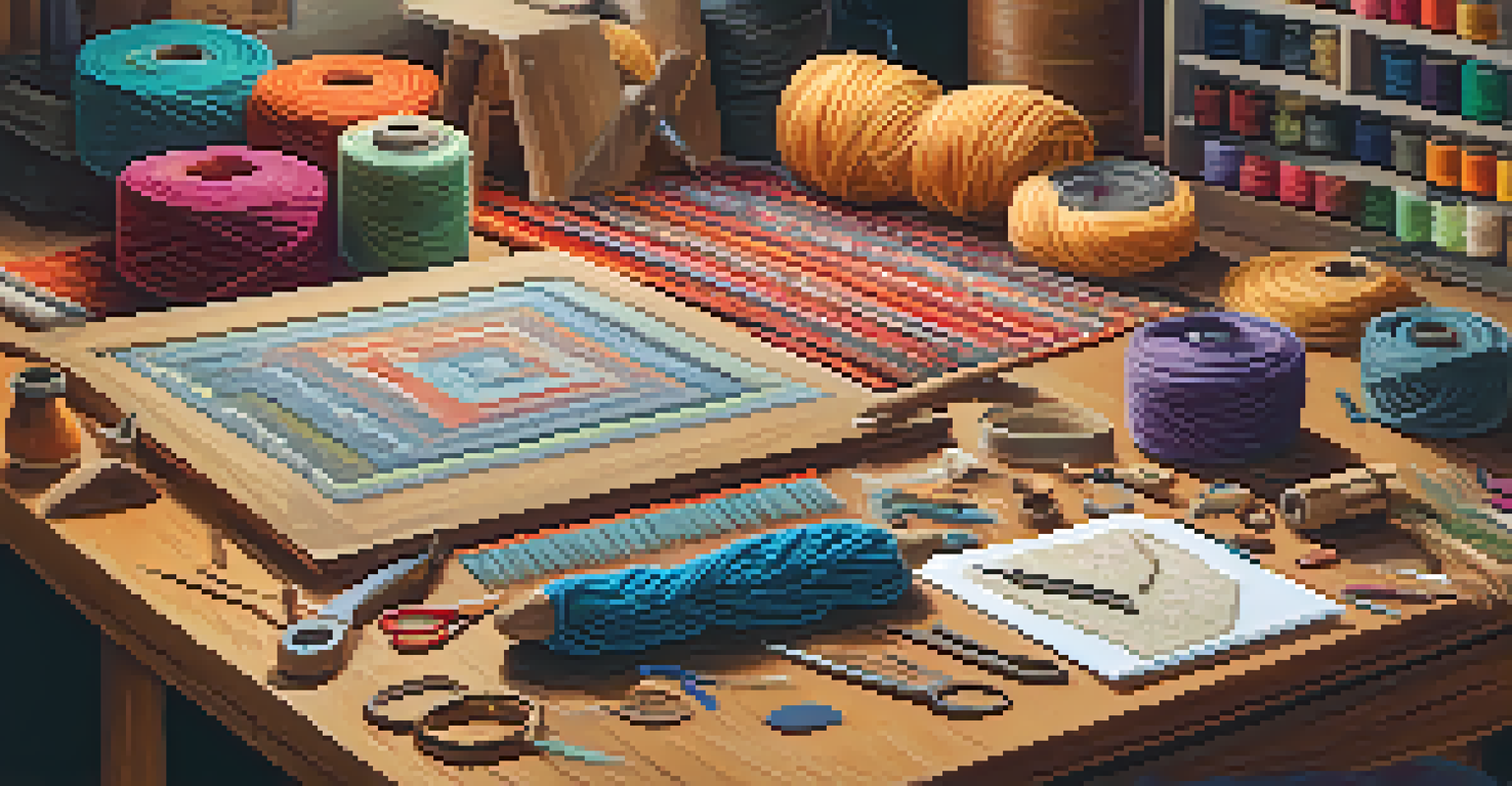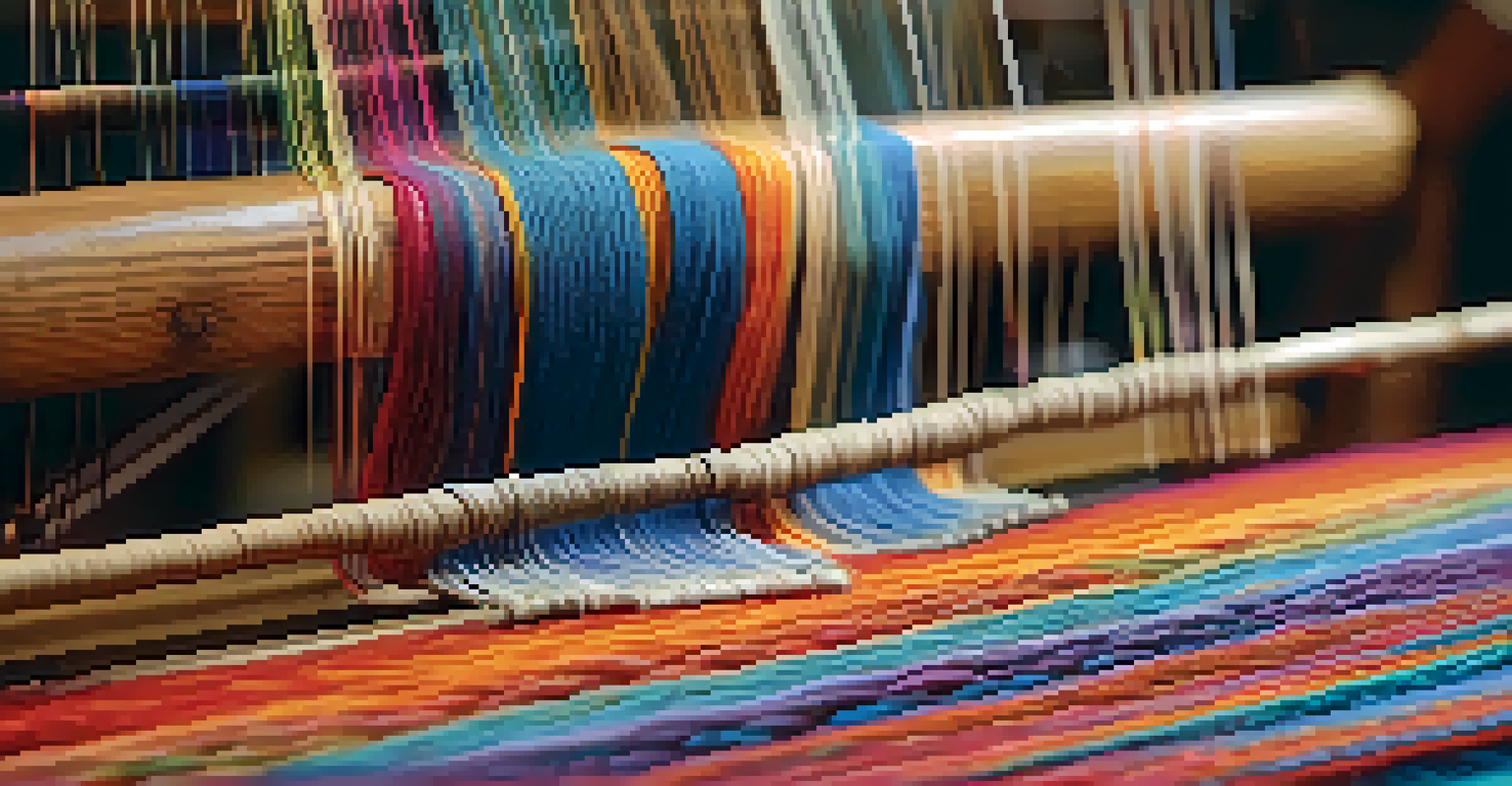Introduction to Rug Making: Techniques and Materials Overview

What is Rug Making? A Brief Introduction
Rug making is an art form that blends creativity with functionality. It involves crafting rugs that can serve as beautiful decorations while providing comfort underfoot. This age-old craft can be traced back to ancient cultures, showcasing the rich history and diverse techniques used across different regions.
Every artist dips his brush in his own soul, and paints his own nature into his pictures.
Whether you're looking to create a cozy atmosphere in your home or simply want to express your artistic side, rug making offers endless possibilities. From simple designs to intricate patterns, the process can be both fulfilling and therapeutic. Plus, it's a wonderful way to engage with your hands and create something unique.
As we delve into the world of rug making, we’ll explore various techniques and materials that can help you bring your vision to life. So, grab your tools, and let's weave our way into this captivating craft!
Essential Tools for Rug Making Beginners
Every artist needs the right tools, and rug making is no exception. You'll typically start with basic supplies like a loom, scissors, and yarn or fabric. Depending on the technique you choose, additional tools such as a hook or needle may also be necessary to achieve the best results.

For beginners, it's important to select tools that are user-friendly. A simple frame loom can be a great starting point, allowing you to create various patterns without feeling overwhelmed. As you gain experience, you can explore more advanced tools that allow for greater creativity and detail.
Rug Making: A Creative Journey
Rug making combines artistic expression with practical design to create unique, functional pieces for your home.
Investing in quality tools can enhance your crafting experience, making the process smoother and more enjoyable. Remember, the right tools not only improve your skills but also help you create pieces that reflect your personal style.
Understanding Different Rug Making Techniques
Rug making encompasses various techniques, each offering unique styles and finishes. Some popular methods include tufting, weaving, and knotting. Each technique has its own charm, allowing crafters to express their creativity in different ways.
Art is the most beautiful of all lies.
For instance, tufting involves using a tufting gun to punch yarn into a backing fabric, creating plush textures. On the other hand, weaving requires interlacing threads on a loom, producing a sturdy and flat rug. Knotting, often associated with traditional Persian rugs, creates intricate designs that can be both beautiful and complex.
Choosing a technique often depends on your skill level and the type of rug you wish to create. Experimenting with different methods can open up a world of possibilities and help you find your favorite style.
Choosing the Right Materials for Your Rug
Selecting the right materials is crucial in rug making, as they determine the durability and appearance of your final product. Common materials include wool, cotton, and synthetic fibers, each offering different textures and qualities. Wool, for instance, is known for its warmth and resilience, making it a popular choice for many rug makers.
Cotton, on the other hand, is lighter and easier to work with, which might appeal to beginners. If you're looking for a budget-friendly option, synthetic fibers can provide a wide range of colors and patterns while being easy to maintain. It's essential to consider where your rug will be placed to choose the most suitable material.
Essential Tools for Beginners
Having the right tools, like a loom and yarn, is crucial for beginners to navigate the rug-making process effectively.
Ultimately, the materials you select will impact not only the look but also the feel of your rug. So take the time to explore your options and find the perfect match for your artistic vision.
Exploring Color and Design in Rug Making
Color and design are the heart and soul of any rug, setting the mood and style of your space. Understanding color theory can help you make informed choices that enhance the beauty of your creation. For example, warm colors like reds and oranges can create a cozy atmosphere, while cool colors like blues and greens evoke calmness.
When it comes to design, you can choose between traditional patterns, geometric shapes, or even abstract designs. Consider what resonates with you and fits your home decor. Sketching out your ideas before starting can help solidify your vision and guide your creative process.
Don’t be afraid to experiment! Combining different colors and patterns can lead to stunning, one-of-a-kind rugs that truly showcase your personality. The beauty of rug making lies in its ability to transform your space and tell a story through design.
Caring for Your Handmade Rugs
Once you've poured your heart into creating a rug, taking care of it is essential to ensure its longevity. Regular maintenance, such as vacuuming and spot cleaning, can prevent dirt from building up and keep your rug looking fresh. Be gentle during cleaning to avoid damaging the fibers or altering the shape.
Depending on the materials used, some rugs may require occasional professional cleaning. This is especially true for wool rugs, which can benefit from a deep clean to maintain their natural luster. Always check the care instructions specific to your rug's materials to avoid any mishaps.
Caring for Your Handmade Rugs
Proper maintenance and care are essential to ensure the longevity and beauty of your handmade rugs.
Additionally, consider placing your rug in low-traffic areas or using a rug pad to prevent wear and tear. With proper care, your handmade rug can become a cherished piece in your home for years to come.
The Joy of Sharing Your Rug Making Journey
Rug making can be a solitary activity, but sharing your journey with others can enhance your experience. Joining local crafting groups or online communities allows you to connect with fellow rug makers. These interactions can provide inspiration, support, and even new techniques to try out.
Consider showcasing your work on social media platforms or crafting blogs. Sharing photos and stories about your creations can spark conversations and encourage others to explore this wonderful craft. Plus, it’s a great way to document your progress and celebrate milestones.

Remember, rug making is not just about the finished product; it’s also about the process and the connections you make along the way. Embrace the community and let your passion for crafting bring you closer to others who share your love for this art.